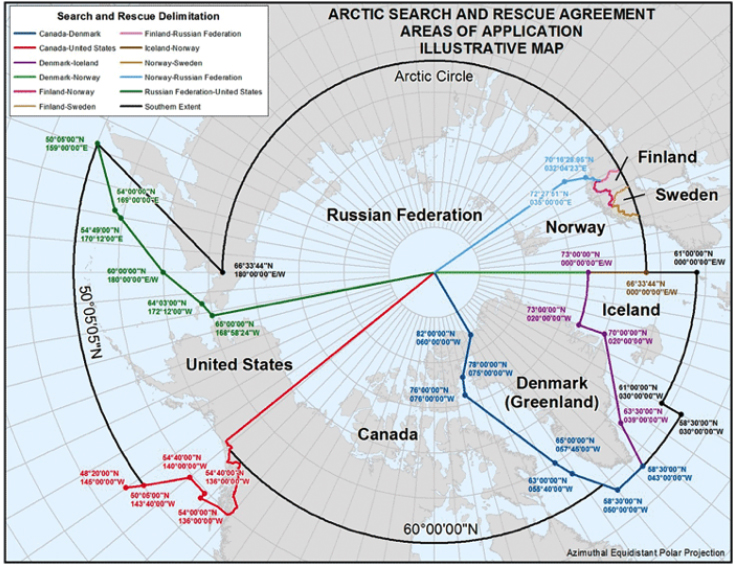Arctic search and rescue capability for mass rescue operations
Martin Boyle says that operations in remote Polar Regions can be extremely challenging and demanding at the best of times, and changing environmental conditions have seen an increase in regional activity as sea ice records have been broken.

Witold Kaszkin/123rf
The International Ice Charting Working Group (IICWG) at its 18th annual meeting in September reported that: “Arctic sea ice set another record in March 2017 with the smallest winter maximum extent since records began in 1979” and “after reaching a record maximum extent in 2014, Antarctic sea-ice extent recorded record low seasonal values in 2016 followed by a record low minimum in February 2017.”
These significant environmental changes have enabled vessels to travel in areas that were previously unnavigable. Recently the Liquid Natural Gas (LNG) carrier Christophe de Margerie set a record time of six days and 12 hours as the first merchant vessel to transit the length of Northern Sea Route without an icebreaker escort.
Luxury cruise liner Crystal Serenity made an historic voyage through the Northwest Passage in September 2016 and more recently completed her second transit with 1,388 passengers and crew albeit assisted by icebreakers, aviation support, and armed with extensive information from ice services.
https://youtu.be/jdFi-tphNu8
Authorities have genuine fears surrounding Mass Rescue Operations (MRO) in the Arctic . In 1989 the cruise ship Maxim Gorky collided with ice resulting in 953 people abandoning the vessel north of Spitzbergen. Despite this incident being nearly 30 years ago the same challenges for an Arctic SAR MRO still exist.
To prepare for the Crystal Serenity voyage the Northwest Passage tabletop exercise was conducted, testing interagency co-operation during an MRO, which highlighted the difficulty of getting SAR resources to the incident scene. Later in 2016, Exercise Arctic Chinook, a partnership field training exercise held in Alaska, tested Arctic SAR interoperability, capability and limitations. The scenario surrounded an adventure-class cruise ship with around 200 passengers and crew on board that experienced a catastrophic event which required ship abandonment with a range of minor and major injuries. A future joint SAR exercise for ‘Arctic Coast Guard Week’ is planned for spring 2019 to be coordinated by the Finnish Border Guard.
Search and rescue in the Arctic encompasses a range of national authorities and agencies. In 2011, under the auspices of the Arctic Council, the eight Arctic countries (Canada, Denmark, Finland, Iceland, Norway, Russian Federation, Sweden and the United States of America) signed a binding international treaty, the Agreement on Co-operation on Aeronautical and Maritime Search and Rescue in the Arctic, that established defined areas of SAR responsibility. The Emergency Prevention, Preparedness and Response (EPPR) working group of the Arctic Council supports the SAR agreement and established a Search and Rescue Expert Group (SAREG) in 2015 to “identify key lessons of Arctic incidents and exercises and communicate/disseminate effective practices and necessary mitigation or remedial actions to the ministerial level, Member States and other relevant international bodies."

(republished under Creative Commons)
The Maritime Preparedness and International Partnership in the High North (MARPART) project in a 2017 report on Maritime activity and risk patterns in the High North discussed a range of risk factors and the probability of unwanted incidents in the Arctic region. Key risk factors included collisions with ice, strandings, fire, oil spills and groundings or other human error related mishaps. The report stated that in Arctic Russia: “The probability of accidents is low, but the consequences may be severe due to the presence of ice and other cold climate conditions, along with institutional factors such as remoteness and lack of preparedness infrastructure.”
So what does this increased activity mean for Arctic maritime and aeronautical search and rescue capability? The Finnish Border Guard’s Arctic Maritime Safety Co-operation (SARC) project in conjunction with the Arctic Coast Guard Forum (ACGF) published an Arctic Search and Rescue Capabilities Survey in August 2017.
The survey highlighted that increasing operations in the Arctic will need corresponding additional safety and preparedness measures including more competence and capability from industry, government and volunteer organisations. As activity levels increase and new technology opens up more opportunity the possibility of incidents in the region also increases. The challenges for Arctic search and rescue identified by respondents were: “Long distances, severe weather, ice and cold conditions poor communications network and lack of resources in the region.” Other issues highlighted included: “The capacity to host patients, achieving situational awareness, lack of infrastructure, and unsuitable evacuation and survival equipment.”
SARC recommended developing advanced information sharing and enhancing cooperation between stakeholders involved in Arctic SAR. The survey also called for other improvements such as joint training and sharing of lessons learned, technical innovations, navigation, rescue and survival equipment, and healthcare services to improve SAR capabilities.
https://youtu.be/73t4cP_KEiY
Martin Boyle, 28/11/2017